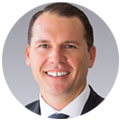The Urban Developer’s latest Gold Coast housing market insights reveals the city’s property prices have increased by nearly $400 a day in the past year—jumping by more than 30 per cent in some suburbs.
This resource, updated periodically, will collate and examine the economic levers pushing and pulling the Gold Coast’s housing market.
Combining market research, rolling indices and expert market opinion, this evolving hub will act as a pulse check for those wanting to take a closer look at the movements across the market.
Gold Coast median property prices % change
| Type | Month | Quarter | Annual | Median |
|---|---|---|---|---|
| All | 2.0%▼ | 6.4%▼ | 26.7%▲ | $727,219▲ |
| Houses | 1.6%▼ | 6.2%▼ | 28.6%▲ | $886,747▲ |
| Units | 2.6%▲ | 6.7%▲ | 23.2%▲ | $544,681▲ |
^Source: Corelogic – September 2021
While other housing market’s across the country saw declines in 2020 due to the pandemic, the Gold Coast, after a decade of moderate growth, has benefitted from the rise of working from home culture and lifestyle offerings.
According to Corelogic, the average Gold Coast house prices increased by 22 per cent between July 2020 and 2021.
The Gold Coast’s increase is now outpacing more established cities such as Adelaide, Darwin and Perth.
In the 12 months leading to March this year, the average price of new apartments increased by 23 per cent.
The rate of price growth has continued to gain momentum on the Gold Coast after reaching a peak in March this year, when values rose 3 per cent in a single month—a 15.4 per cent increase compared to March 2020.
The 2 per cent growth in dwelling prices in September was down slightly from the 2.3 per cent lift in August. Prices are now up 26.7 per cent across the year.
The current median value for dwellings is $727,000 advancing an additional $17,000 over the month of September.
A typical Gold Coast house is now worth $887,000, with a 1.6 per cent increase in September pocketing homeowners $25,000 across the month.
Over the June quarter, the median house price rose to a new record high, 18.2 per cent higher than the year before.
The median for a Gold Coast’s apartment is now $545,000 with many new buyers planning to split their time and lease their unit to holidaymakers while they are in the city, and spend part of their time working from home at the beach.
Buyers have also been lured by the Gold Coast apartment market’s switch from skyscrapers such as Q1 and Soul, both of which are more than 75 levels, to smaller projects featuring bigger apartments with more ameneties.
Gold Coast’s housing market: policy updates
Doubt on RBA rate hike plans
The central bank reiterated its view it will not increase the cash rate until actual inflation is sustainably within the 2 per cent-to-3 per cent target range and such condition would not happen before 2024.
RBA governor Philip Lowe said it was “difficult” to rationalise the market’s expectation that rates might rise in 2022 or 2023.
Frydenberg signals home loan crackdown
Treasurer Josh Frydenberg has given backing to regulators to crack down on high-debt home loans to reduce financial risks from record-low interest rates and surging property prices.
Analysts expect the council to announce new home lending restrictions before the end of this year.
Brisbane Olympics to push property market’s limits
Brisbane house prices will hit the $1-million median well before the 2032 Olympics with suburbs near venues tipped to move up to $3.9 million.
Meanwhile, prices on the Gold Coast and Sunshine Coast hit $792,000, up 18.2 per cent on last year, and $825,000 up 23.1 per cent, respectively.
What the experts are saying about the Gold Coast’s housing market

Nicola Powell
Chief of Research
Domain
“Queensland has been ready for growth for so long, and while it has always been the spot for people to move interstate from Sydney or Melbourne, the pandemic has created a new environment for people to re-imagine what their life is.
“So, we’ve seen an increased volume of people moving from interstate in their prime working years, and while south-east Queensland has always been front of mind for retirees, that’s not the case anymore.
“It offers affordability and so, for some, they’ve been able to put a lifestyle dream into reality.”

Steven King
Gold Coast Director
Colliers International
“It could be scary to see how many people do want to come to the Gold Coast.
“Covid has probably brought forward those plans many years, where they’re [buying] now as opposed to when they retire.
“That demand meant prices have got to go up, but the Gold Coast is still more affordable than some other places.”

Mark Witheriff
Gold Coast Managing Director
CBRE
“Prime beachfront property up and down the Gold Coast, from the border to Main Beach, is very strong.
“There’s a real lifestyle change. They are looking for three bedrooms, some real comfort in them, whereas previously they were two-bedroom apartments and they were trying to get more in there rather than less.
“Now people are downsizing or coming up and wanting to live in these prestige apartment buildings rather than just a holiday. That’s the shift – bigger and better apartments.”

Stuart Legg
Sales Associate
RE/MAX Regency
“For years I’ve probably run at about 5 per cent per annum for interstate buyers but now it’s 16 per cent.
“I think it comes back down to the fact that interstate buyers want something that will improve their lifestyle … and money goes a long way up here.
“I have also seen more younger buyers coming up and a few young professional couples—who would generally be chained to a CBD environment but [who] can now work from home—are buying acreage.”
Gold Coast housing market forecasts
ANZ similarly predicts at the national level Australian house prices will rise by a strong 17 per cent through 2021, before slowing to 6 per cent growth in 2022.
CommBank forecasts dwelling prices will rise 8 per cent in 2021 and 6 per cent in 2022, with house prices to rise 16 per cent in that time and unit prices by 9 per cent.
NAB has also upgraded its forecasts for dwelling prices—now expected to grow around 19 per cent in 2021 and per cent in 2022.
Westpac has upgraded its housing market forecasts, tipping house prices to lift by a further 5 per cent in the remaining three months of 2021 to be up 22 per cent for the year.
Gold Coast auction clearance rates
| Week | Clearance rate | Total Auctions |
|---|---|---|
| Week ending 6 September 2021 | 66.6% | 69 |
| Week ending 13 September 2021 | 70.9% | 89 |
| Week ending 20 September 2021 | 74.5% | 55 |
| Week ending 27 September 2021 | 69.8% | 83 |
^Source: Corelogic – September 2021
While Brisbane, Gold Coast and Sunshine Coast property markets are all unique, there are a few things they have in common and that is to do with what Queenslanders are looking for in a home: size, property type, property features and location.
According to Corelogic, year-on-year home sales have risen by 54 per cent in Queensland to be at the highest number of annual sales since 2004.
The greatest increase in prices over the year has been in suburbs along the future southern route of the Gold Coast light rail, according to the data, with the next stages to run from Broadbeach to Burleigh Heads and to the border via Gold Coast Airport.
Broadbeach-Burleigh recorded a 32.4 per cent rise in property values between August 2020 and August 2021 while Coolangatta jumped 32 per cent.
Nationally, turnover has been the highest in Queensland, with 6.8 per cent of the state’s properties transacting over the year to August.
Auction clearance rates are expected to continue at record high levels bolstered by demand from interstate buyers emerging from lockdowns alongside local buyers taking advantage of historically low interest rates.
Supply also remains tight with more people looking to buy on the Gold Coast than vendors looking to sell—leading to increased property prices.
Views for Surfers Paradise auctions are up 40 per cent while listings in Robina, Broadbeach, Southport and Sorrento are all up more than 30 per cent.
Gold Coast residential rental vacancy rate
| City | Vacancy rate | Monthly change | Vacancies | Net change |
|---|---|---|---|---|
| Gold Coast | 1.2% | 0.1%▲ | 494▲ | ▲39 |
^Source: SQM Research – September 2021
Queensland’s rental crisis has worsened to a point where it is now more expensive to rent a house on the Gold Coast than in Sydney, and the chronic shortage of available properties could last for at least three years, experts say.
The median asking rent for houses on the Gold Coast has jumped to $766 a week as of September, compared with $702 in Sydney, according to recent SQM Research data.
Gold Coast house rents shot up by five per cent over the past three months with the city also collecting its greatest annual rate of growth—22.9 per cent—since records began in 2004.
Unit rents also rose 13.6 per cent over the year and 4.2 per cent over the quarter, the strongest rate of annual growth since 2007.
The pandemic-driven rush from Sydney and Melbourne into the state has sent Queensland’s rental market into uncharted territory, pushing vacancy rates down to their lowest levels since 2012.
House rents in Mudgeeraba rose 8.1 per cent over the past year to $600 per week with Clear Island Waters, on the Gold Coast, stealing the top-performing crown by suburb after the median house rent skyrocketed 30 per cent in a year to $949 per week.
Median house rents in the Ormeau-Oxenford region to jump 7.1 per cent over the past quarter to $525 per week, with units in the nearby Nerang region soaring by 7.9 per cent to $480 in three months.
Queensland building approvals
| Dwelling | Approved | Monthly % change |
|---|---|---|
| Houses | 2234▼ | -5.2%▼ |
| Units | 3516▲ | 4.0%▲ |
^Source: Australian Bureau of Statistics – August 2021
New dwelling approvals have risen an unexpected 6.8 per cent in August, led by an uptick in apartments moving through the system at the fastest rate since March.
The national seasonally adjusted total of 18,716 dwelling approvals ended five consecutive months of decline and was bolstered by a 13.7 per cent resurgence in apartment approvals, data from the ABS indicated.
Strong demand for apartments was particularly evident in Queensland and Western Australia where population growth is driving demand for medium-density housing.
The number of units approved in Queensland and Western Australia were 33.2 per cent and 84.2 per cent higher in the 12 months to August 2021 than in the previous year.
Residential dwelling approvals have now increased by 33.7 per cent in the three months to August compared to the same time last year, with detached approvals up by 31.5 per cent and multi-unit approvals up by 38.1 per cent.
Residential alteration and additions approvals ticked up 10 per cent from July to the second highest level recorded, behind April of this year.
Queensland home loan lending indicators
| Type | Aug 2021 ($bn) | Monthly % change |
|---|---|---|
| New loan commitments for owner occupier housing | $3.94 | 0.5%▲ |
| New loan commitments for investor housing | $1.85 | 13.4%▲ |
| New loan commitments to first home buyers | $2.53 | 1.6%▲ |
^Source: Australian Bureau of Statistics – August 2021
The relatively restriction-free states of Queensland recorded the strongest growth in investor demand this year, up 13.4 per cent over the month of August.
Investor loan commitments reached about $1.85 billion across the four weeks according to the latest Australian Bureau of Statistics lending indicators as buyers look to snap up a potential oceanfront property.
At $9.4 billion, investor loan commitments nationally across the month were at their highest level in dollar terms since April 2015, about the last time the prudential regular was forced to step in and cool the housing market.
The average owner-occupier home loan is up $76,000, or about 15 per cent, for the year, while the average dipped for most states in August.
The value of investor lending in August was almost double that of 2020. But in contrast to 2015, when investors made up about 50 per cent of the value of loan commitment, the present portion is just below 30 per cent.
But despite growing demand from investors, owner-occupier commitments remained elevated above long-run levels and totalled $21 billion over the reporting period.
Queensland interstate migration
| State | Arrivals | Departures | Net change |
|---|---|---|---|
| Queensland | 28,500▼ | 21,465▲ | 7035▼ |
^Source: Australian Bureau of Statistics – March 2021
With a population of roughly 3.7 million, Queensland’s south-east is Australia’s fastest-growing zone.
The Gold Coast and south-east Queensland were direct beneficiaries of Victoria’s extended lockdown last year, with a dramatic population shift north.
Australian Bureau of Statistics data for June revealed Victoria’s population fell by 12,700 while the number of interstate migration to Queensland increased by 30,000, or 2 per cent.
Before the pandemic, Gold Coast city planners were working to a framework that the population would reach a million by 2041, delivering 6000 dwellings for approximately 15,000 new arrivals per annum.
Queensland’s population is now expected to surge by more than a quarter of a million people in the next four years, according to forecasts in the federal budget, as people continue to flood in from other states.
Additional forecasts suggest it will top 5 million by the middle of the next decade.
Article Source: www.theurbandeveloper.com
from Queensland Property Investor https://ift.tt/3GF14ml
via IFTTT